Hippie Stomper 11/02/2024 Photo Album
The hippie stomper has secured a spot as one of my top producing flies if not number one. The beauty of this fly is its versatility. I tie only size 14’s on a 2XL hook, and this creates a relatively small foam body fly. Perhaps I should experiment with more sizes and colors, but my success rate with my narrow offering makes me question how much improvement I could gain.
My versatility comment stems from the fly’s buoyancy and size. The foam structure allows the fly to float quite well, and this translates to supporting two size 14 beadhead nymphs. Unlike larger hopper patterns, however, the hippie stomper is lighter and thus yields a softer landing in low and clear conditions. When fish refuse my size eight hoppers and chubby Chernobyls, I resort to the hippie stomper, and quite often the downsizing pays dividends.
 The Beginning of My Tying List and Inventory Count
The Beginning of My Tying List and Inventory Count
If I wish to go with a dry fly presentation, the hippie stomper is very productive solo or as the lead fly on a double dry arrangement. During the past season I experienced many fine days using the hippie stomper as the first fly along with a more imitative fly behind it such as a deer hair caddis or comparadun. The hippie stomper is very visible, and this makes tracking the typically drab trailer much easier.
As a solo fly, it is also no slouch. I believe that it imitates terrestrials and green drakes as well as other fish food morsels. It just looks buggy. If I haven’t convinced you of the versatility of this fly, I am not sure what else I have to say. This fly probably spent more time on my line than any other in my box including the dependable hares ear nymph and salvation nymph.
I settled on peacock and dark olive ice dub, as my preferred body colors on the hippie stompers that I tie. The body is only visible under the overlying foam at the back of the abdomen, so I am not convinced that color makes a huge difference. The creator, Andrew Grillos, favors various colors of flashabou, a tinsel like product. I have some reds, a silver, a blue, purples and bright green tied with the flash, but I rarely resort to them.
During September I was losing hippie stompers at an alarming rate, so I inspected my damaged fly canister and discovered, that I had five in need of repair. I fixed them by replacing legs and reinforcing unraveling thread, and I ended the season with plenty in reserve.
 Twenty Completed and the Necessary Materials
Twenty Completed and the Necessary Materials
Because of my inventory scare, I decided to make the hippie stomper my first tie of the 2024 tying season. I counted my supply and discovered that I had 25, so I suppose my concern was over done. I checked my tying checklist from the previous year, and I began the season with forty. Since five of the 25 counted were refurbished, simple math revealed that I lost twenty flies or half my beginning inventory. I collected all the necessary materials and tied an additional twenty to bring my 2025 beginning inventory to 45. Hopefully this will suffice, although I am certain that hippie stomper usage will once again increase in the new year.

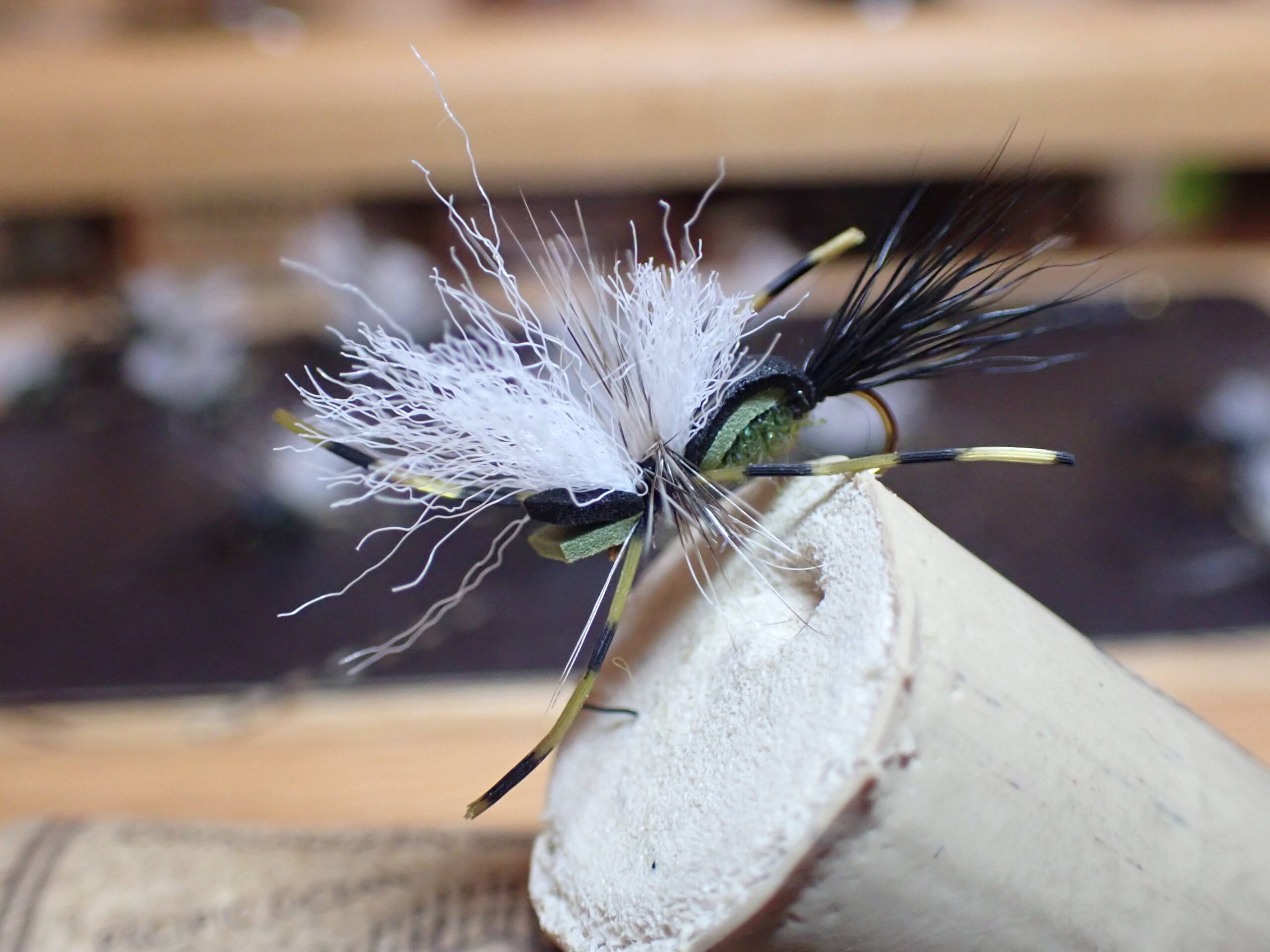 The Hippie Stomper Look
The Hippie Stomper Look Pocket Water in the Shade
Pocket Water in the Shade Decent Early Catch
Decent Early Catch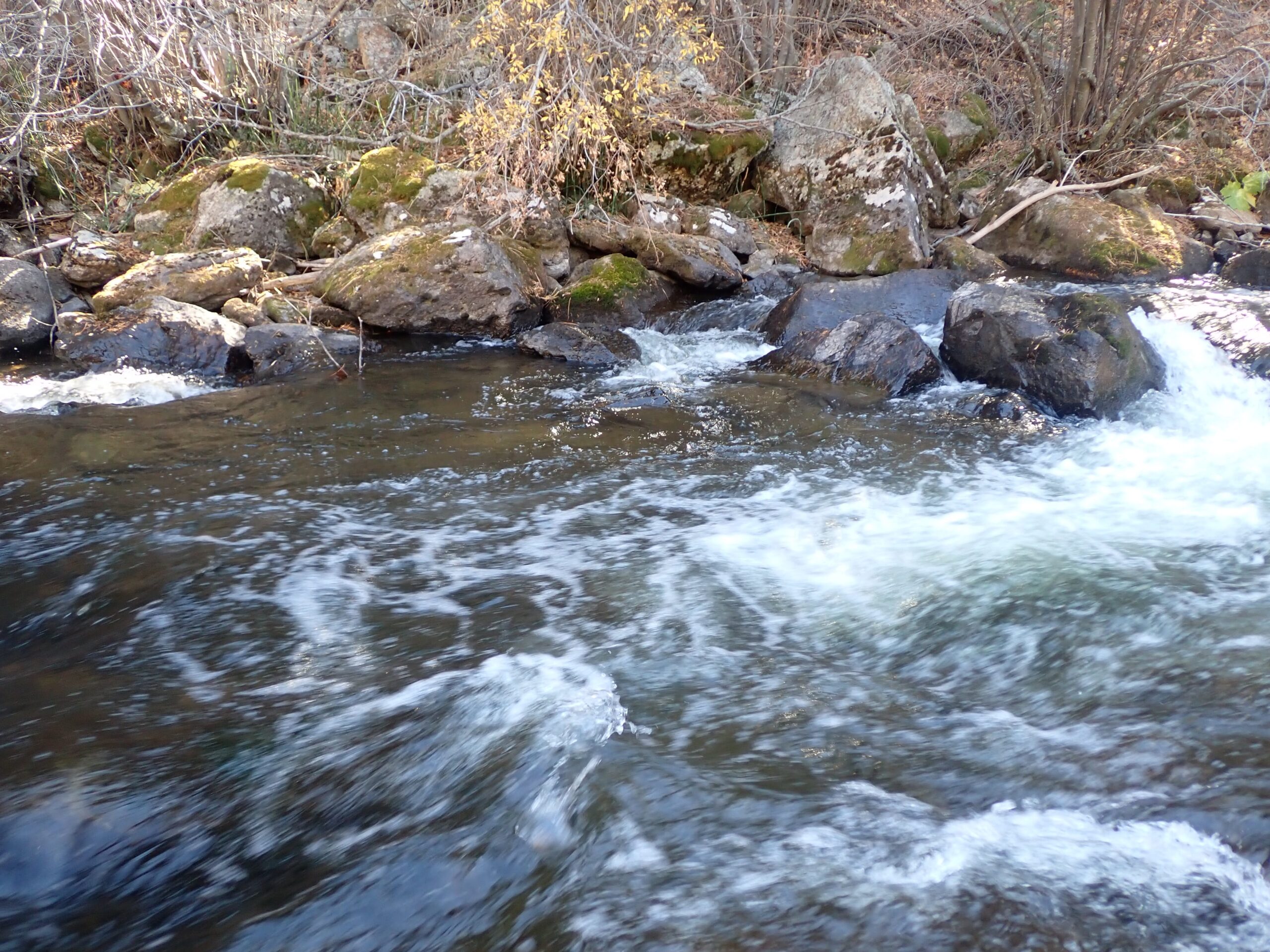 Bank Pocket
Bank Pocket Jake’s Gulp Beetle
Jake’s Gulp Beetle Curled Brown Trout
Curled Brown Trout Black Ghost
Black Ghost Cheech Leech
Cheech Leech Prime Spot Did Not Produce
Prime Spot Did Not Produce Site of First Fish
Site of First Fish Rainbow Kicked Things Off
Rainbow Kicked Things Off Number Two Was This Nice Brown Trout
Number Two Was This Nice Brown Trout Shallow Run Along the Rocks Produced
Shallow Run Along the Rocks Produced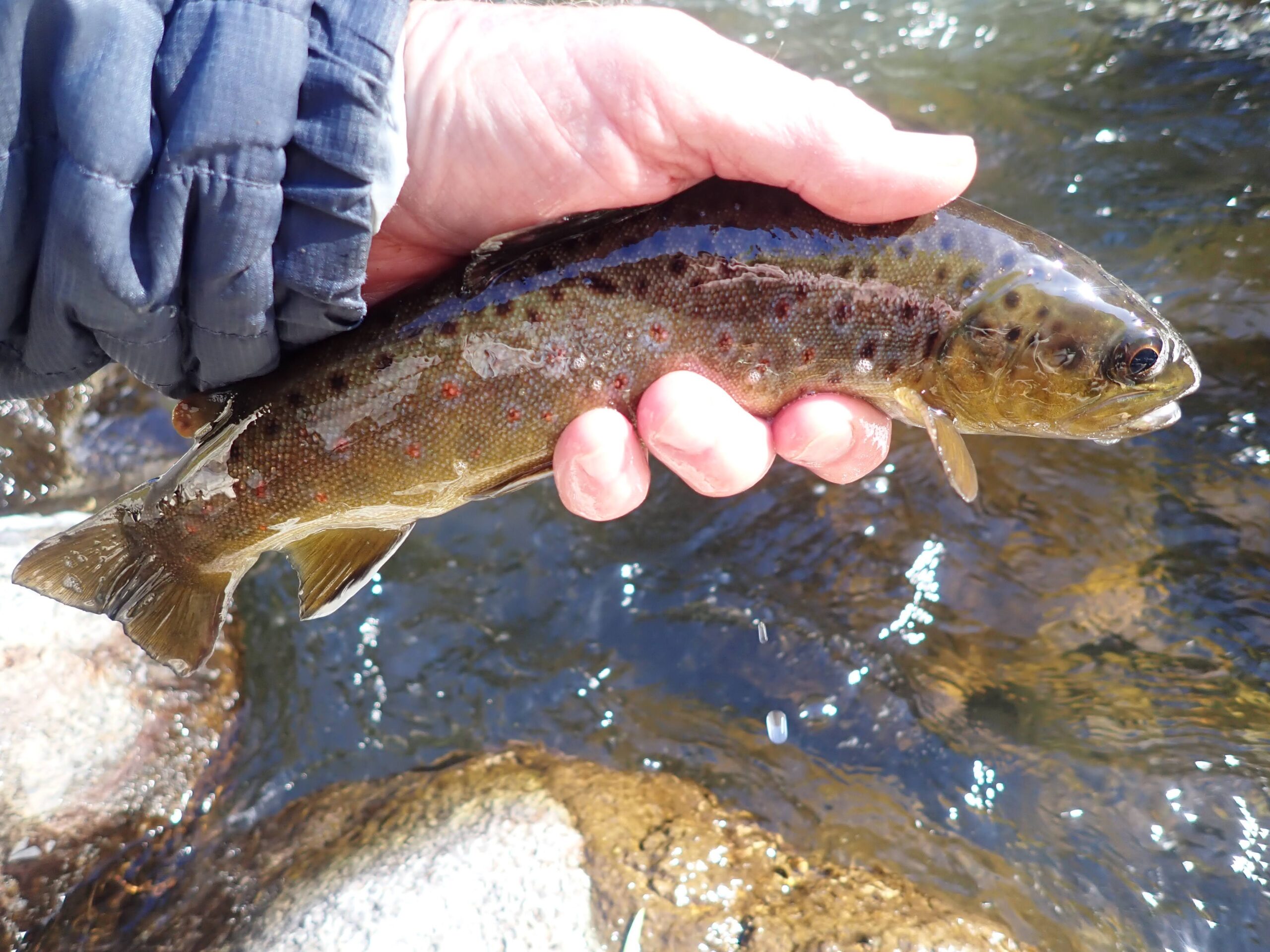 Another Fine Brown Trout
Another Fine Brown Trout Foam Was Home
Foam Was Home Typical Pocket in the Morning
Typical Pocket in the Morning Another Great Spot in the Morning
Another Great Spot in the Morning Right Area Next to the Bank Was Typical of Very Productive Water
Right Area Next to the Bank Was Typical of Very Productive Water Stunning Colors
Stunning Colors Wide Productive Section
Wide Productive Section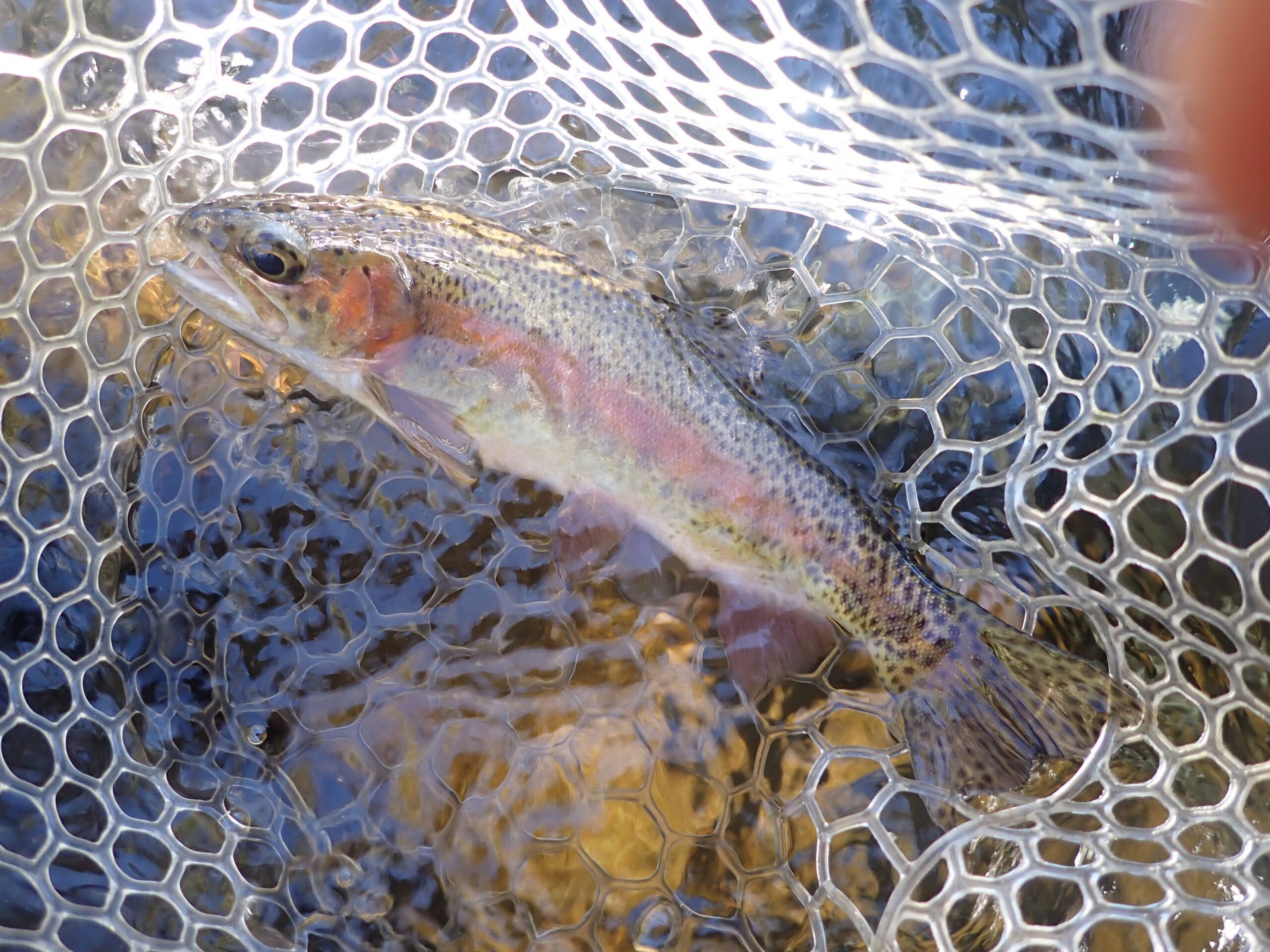 Feisty Rainbow
Feisty Rainbow Long by Tuesday Standards
Long by Tuesday Standards Center Slick Looks Prime
Center Slick Looks Prime Another Nice Spot Along the Bank
Another Nice Spot Along the Bank Near the End of the Day Jewel
Near the End of the Day Jewel Probed Both Sides of the Pyramid Rock on Right
Probed Both Sides of the Pyramid Rock on Right Near the Start
Near the Start
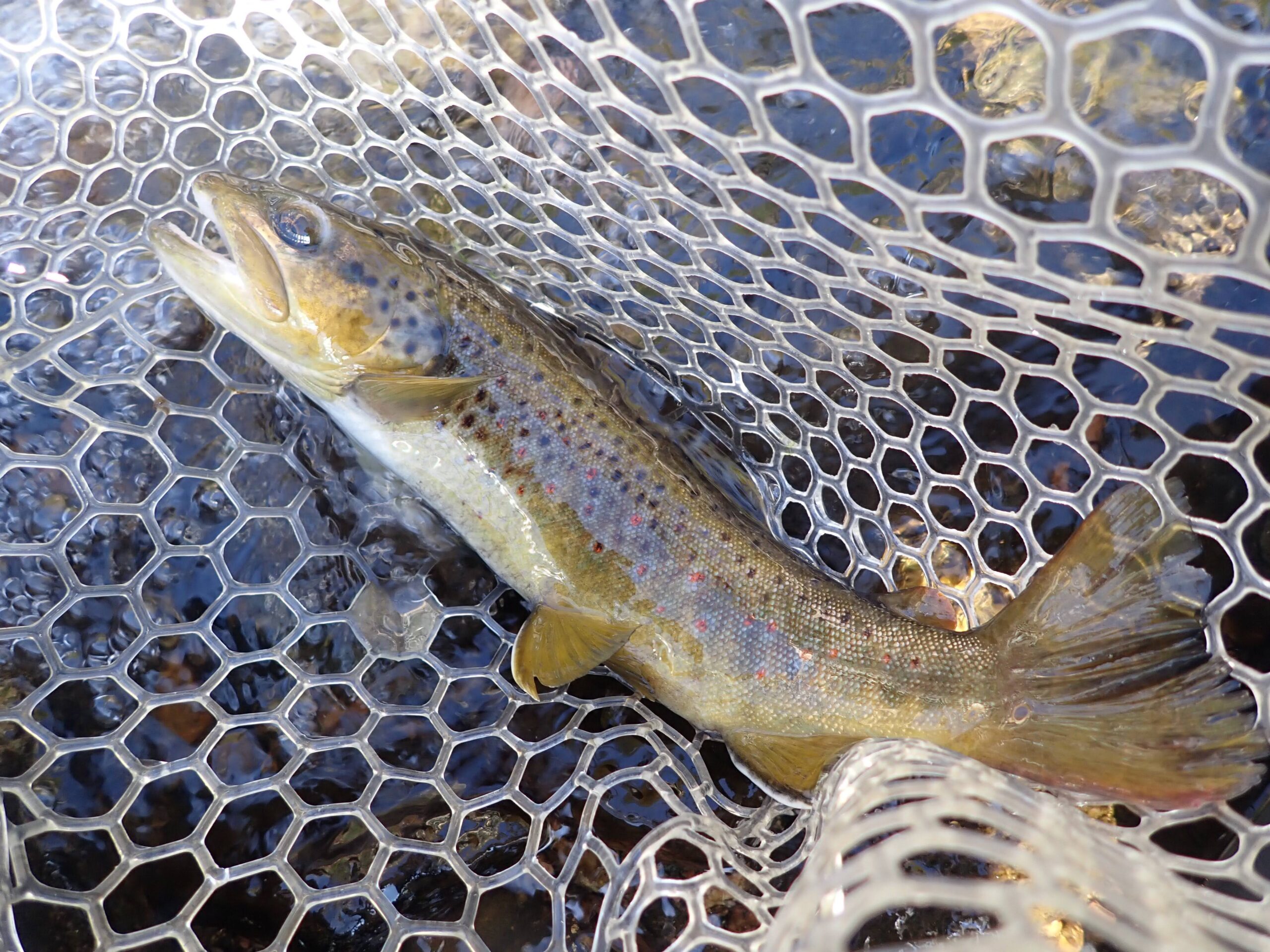 An Early Brown Trout
An Early Brown Trout Best Brown of the Day Came from This Nondescript Spot
Best Brown of the Day Came from This Nondescript Spot Another Respectable Brown Trout
Another Respectable Brown Trout Promising Pool
Promising Pool Makes Up for Lack of Size with Color
Makes Up for Lack of Size with Color Lovely Pattern on This One
Lovely Pattern on This One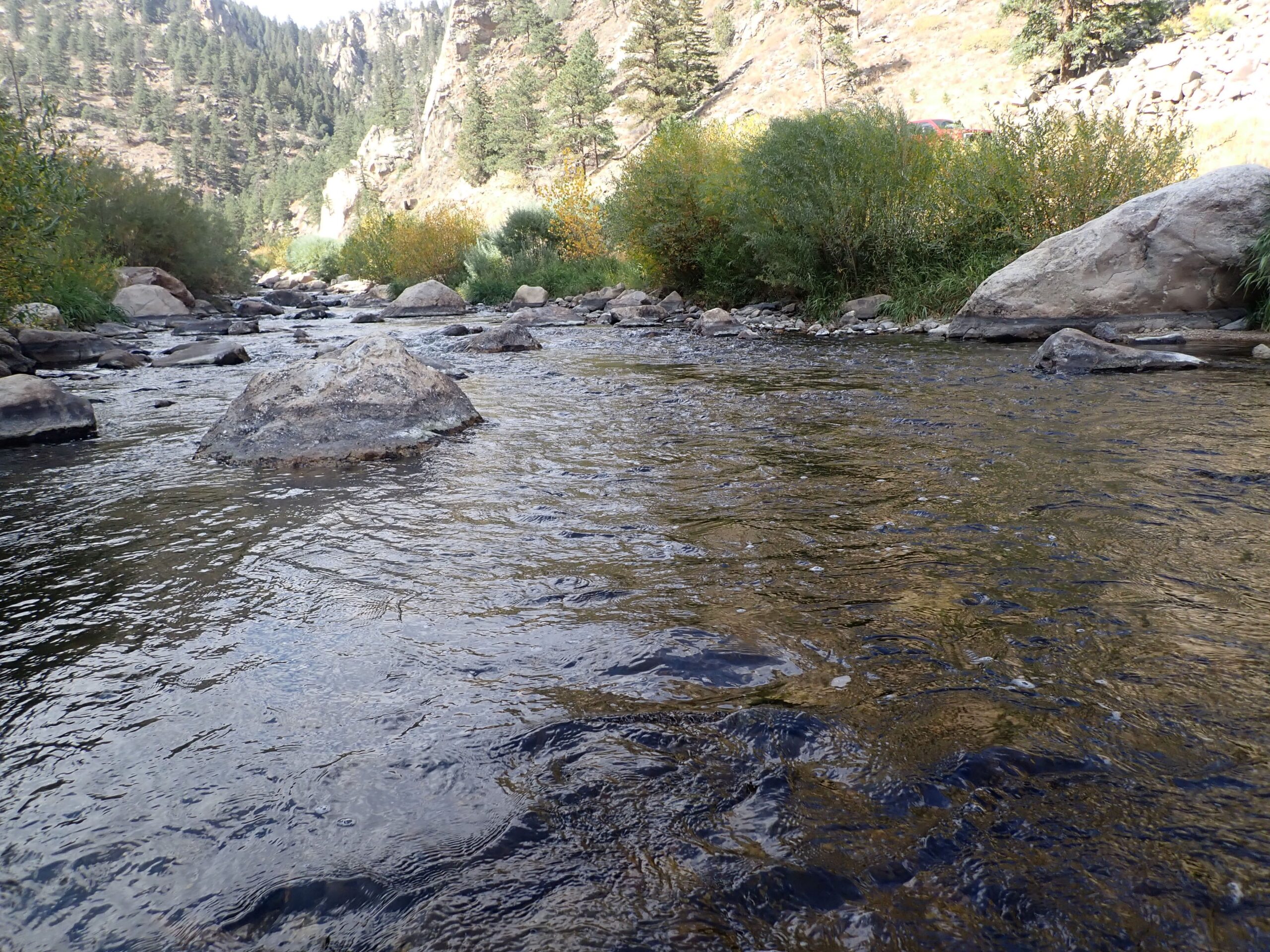 Typically Productive Water Type
Typically Productive Water Type Light Olive Body Background Color
Light Olive Body Background Color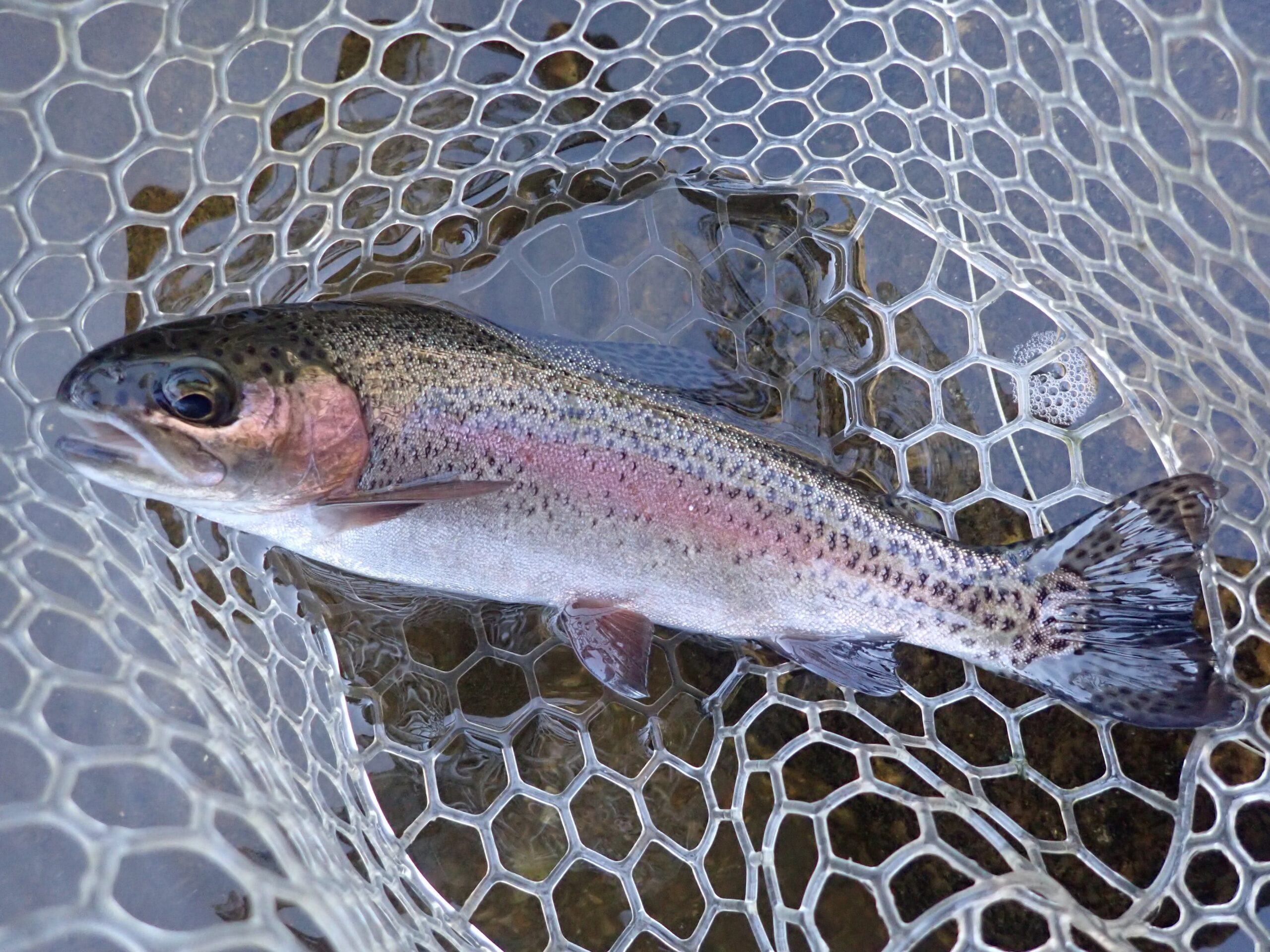 Emphasis on Pink
Emphasis on Pink Deep Spot Between the Rocks
Deep Spot Between the Rocks Pockets Around Exposed Boulders
Pockets Around Exposed Boulders Wide Riffle Area Delivered
Wide Riffle Area Delivered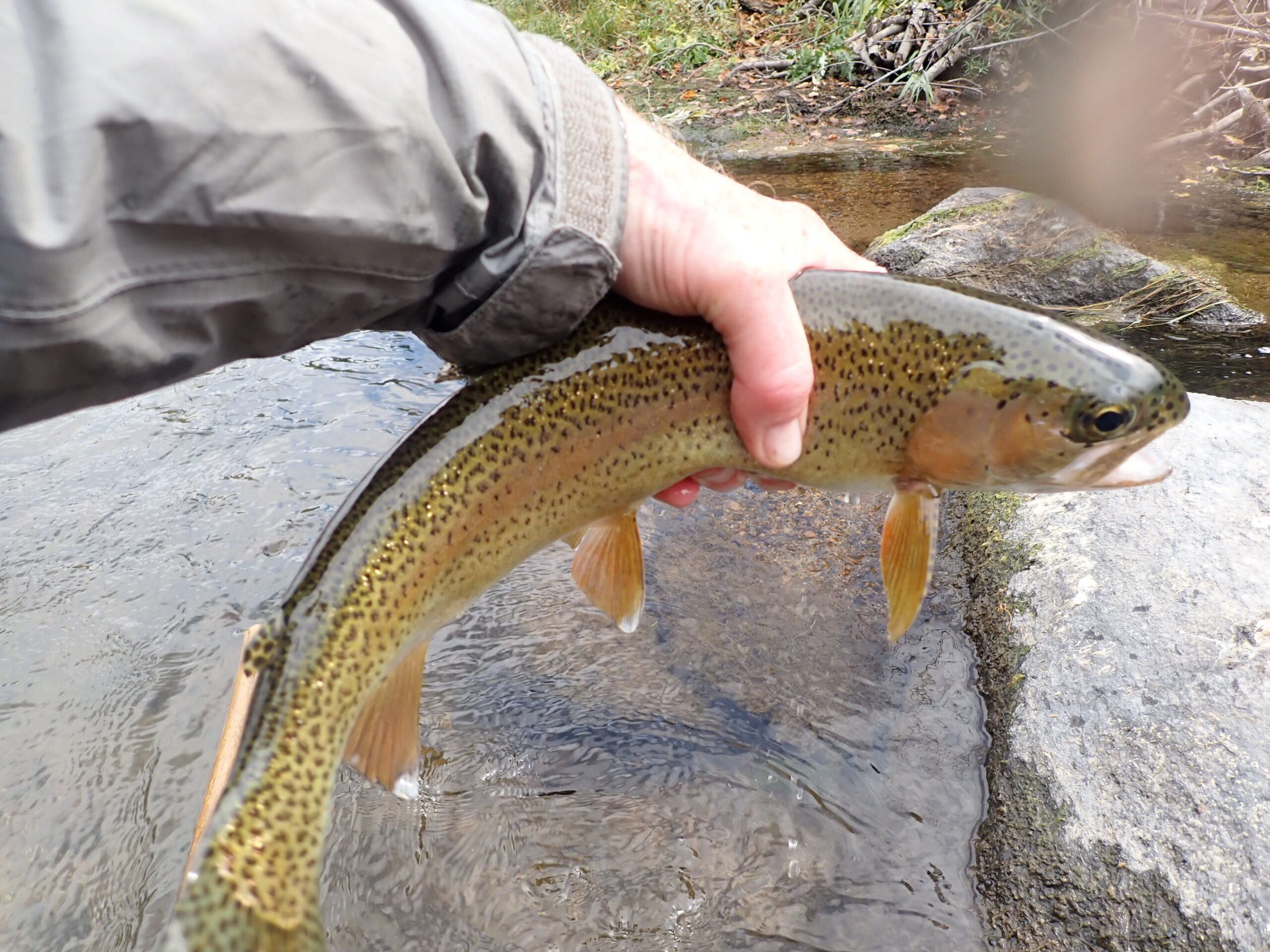 Best of the Day
Best of the Day Second Nice Rainbow Came from This Area
Second Nice Rainbow Came from This Area Headed Home
Headed Home Top of Long, Smooth Pool
Top of Long, Smooth Pool Dry Fly Reward
Dry Fly Reward Chara Coated in Mud
Chara Coated in Mud First and Best
First and Best Source of First and Best
Source of First and Best A Second Nice Rainbow
A Second Nice Rainbow Heavy Whitefish
Heavy Whitefish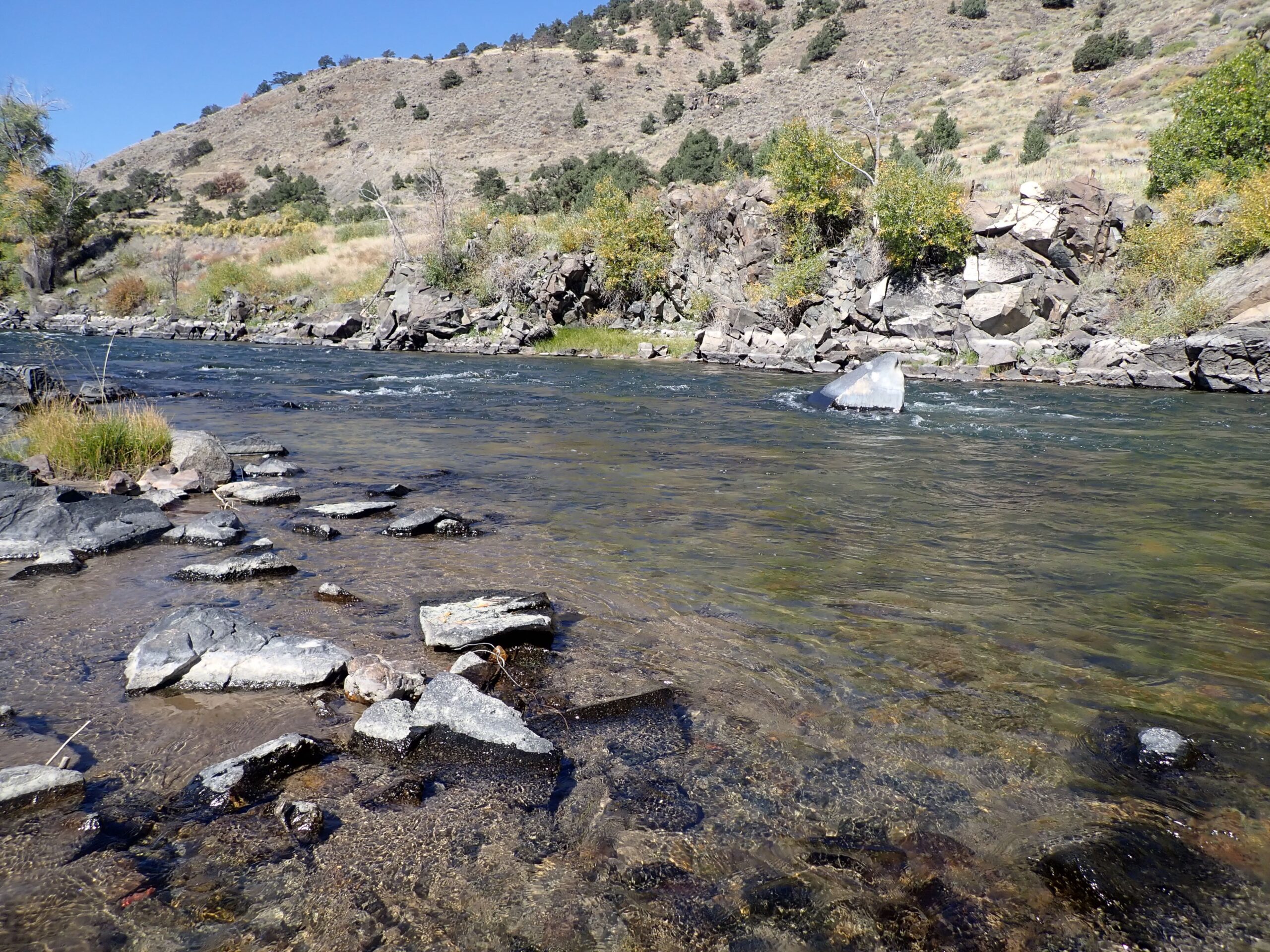 Low and Clear
Low and Clear Hippie Stomper Fan
Hippie Stomper Fan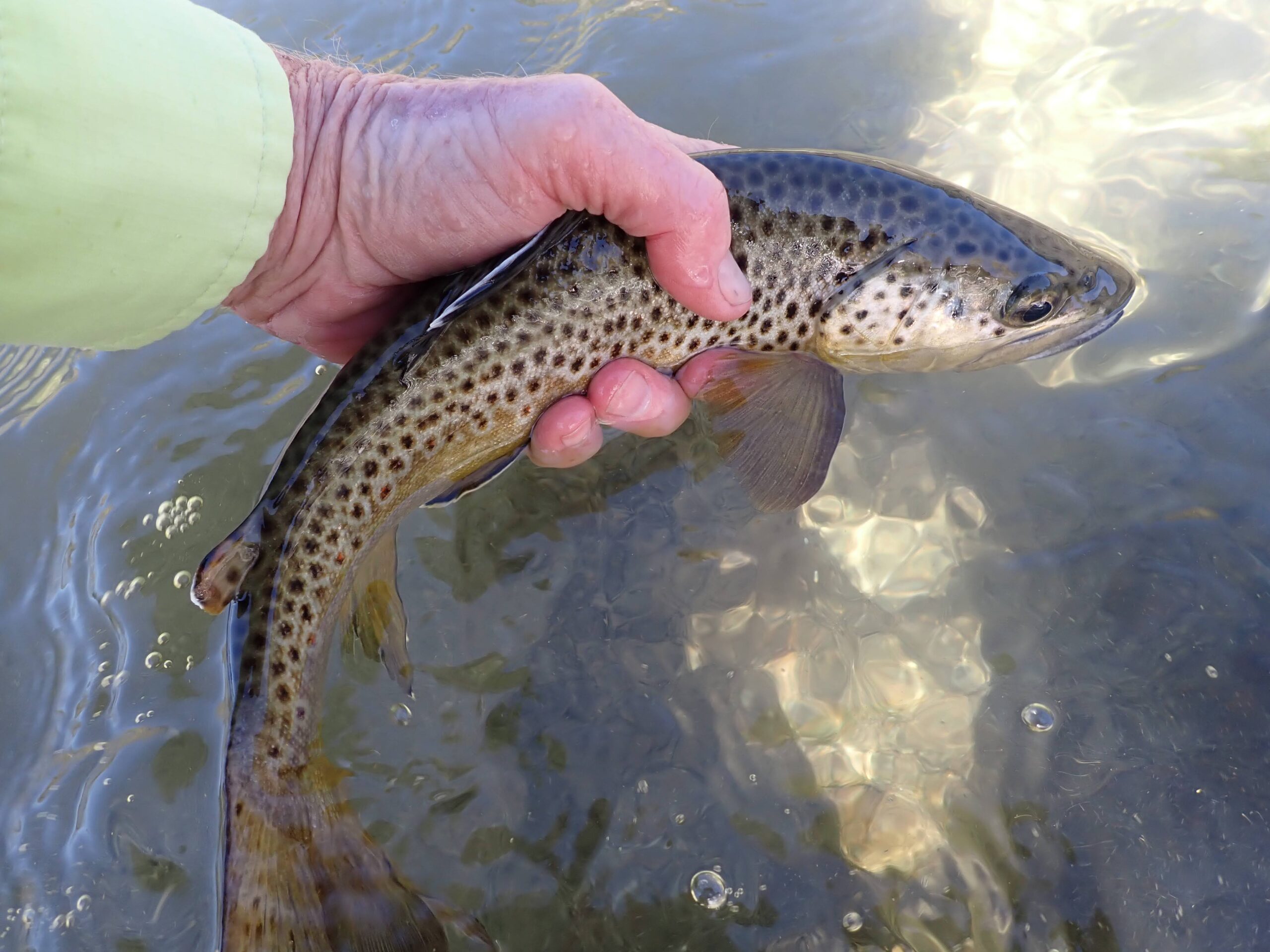 Wild Fish and Bubbles
Wild Fish and Bubbles Site of Rainbow Feeders
Site of Rainbow Feeders Pink and Scarlet
Pink and Scarlet Wide Stripe on Second Rainbow Soft Hackle Emerger
Wide Stripe on Second Rainbow Soft Hackle Emerger Near the Start
Near the Start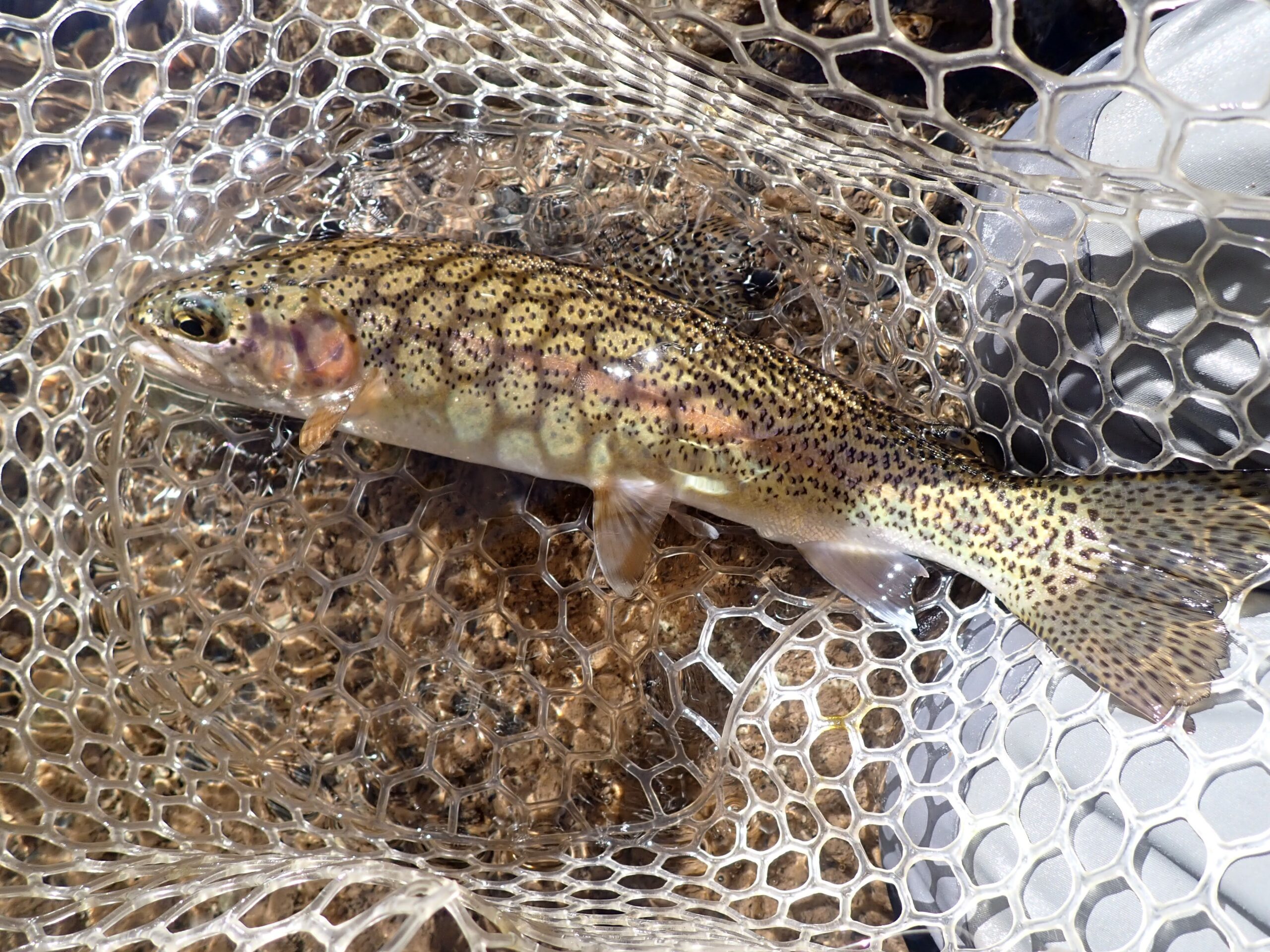
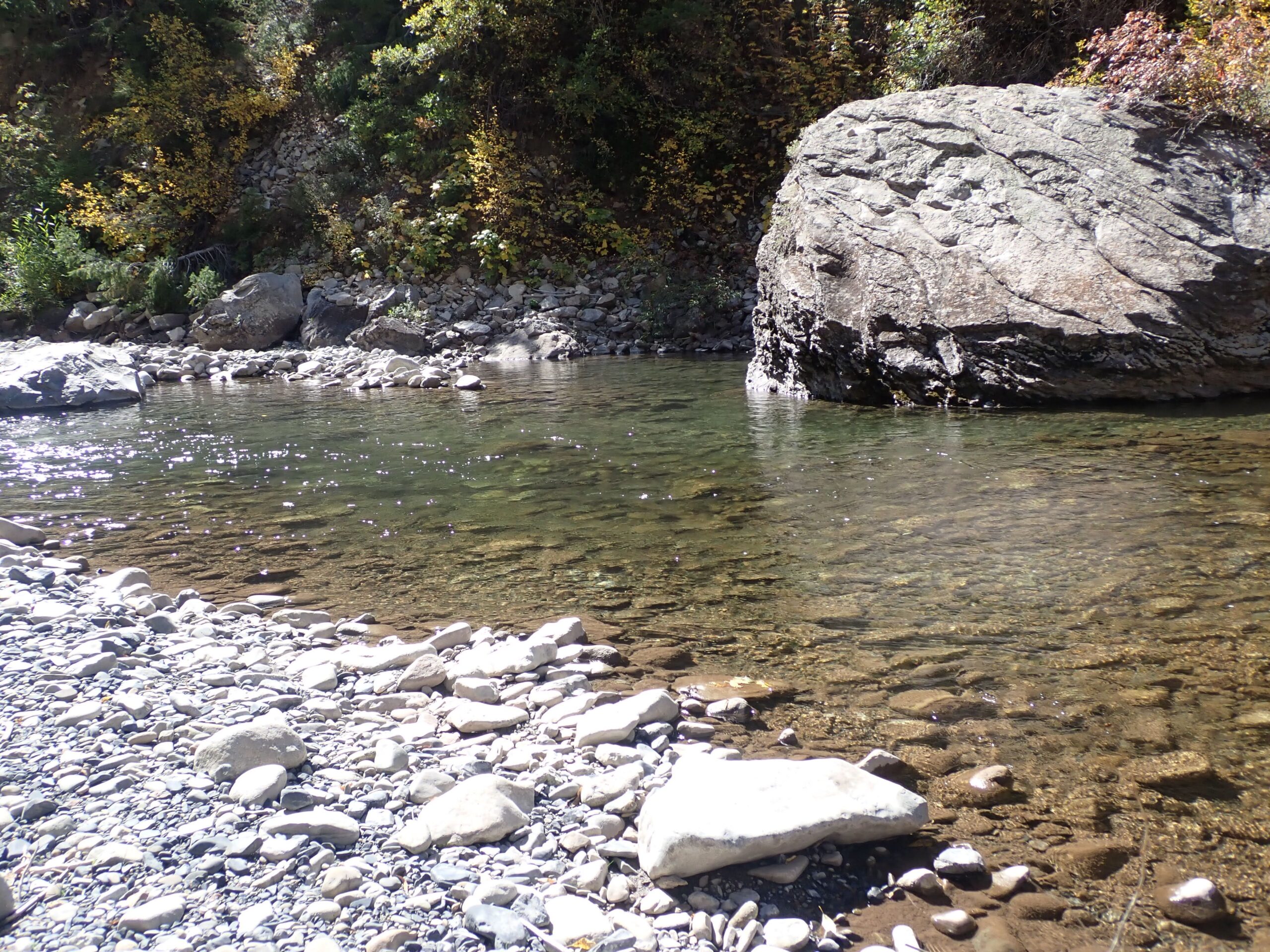 Lunch View
Lunch View Hunk of a Brown Trout
Hunk of a Brown Trout Double Dry Catch
Double Dry Catch Color and Length Equaled Best of the Day
Color and Length Equaled Best of the Day Run and Tail Out Equaled Prime Water
Run and Tail Out Equaled Prime Water Another Fabulous Rainbow
Another Fabulous Rainbow How Is This for Outstanding Water?
How Is This for Outstanding Water? Tail Looks Powerful
Tail Looks Powerful Another Promising Pool
Another Promising Pool Autumn Splendor
Autumn Splendor First Landed Trout
First Landed Trout Long and Wide Pool
Long and Wide Pool Wide Girth on This Brown Trout
Wide Girth on This Brown Trout Cube Rock Pool
Cube Rock Pool A Trout from Cube Rock Pool
A Trout from Cube Rock Pool Productive Pocket Water
Productive Pocket Water Submarine Submerged
Submarine Submerged Long, Slow Moving Pool
Long, Slow Moving Pool Dry Fly Sipper
Dry Fly Sipper Chunky Fish Near the End
Chunky Fish Near the End